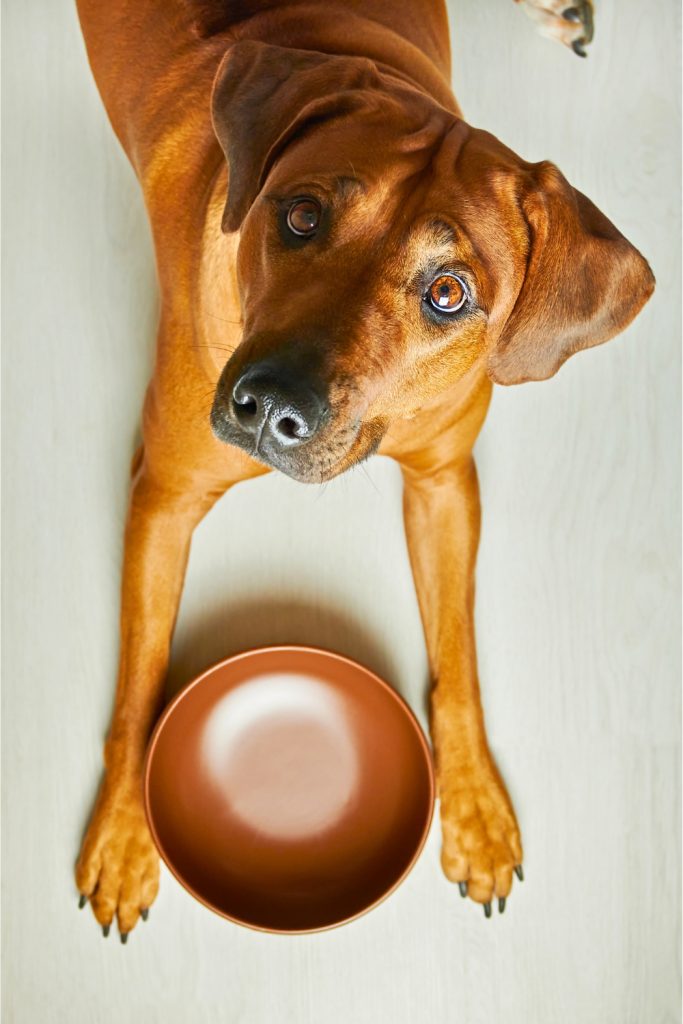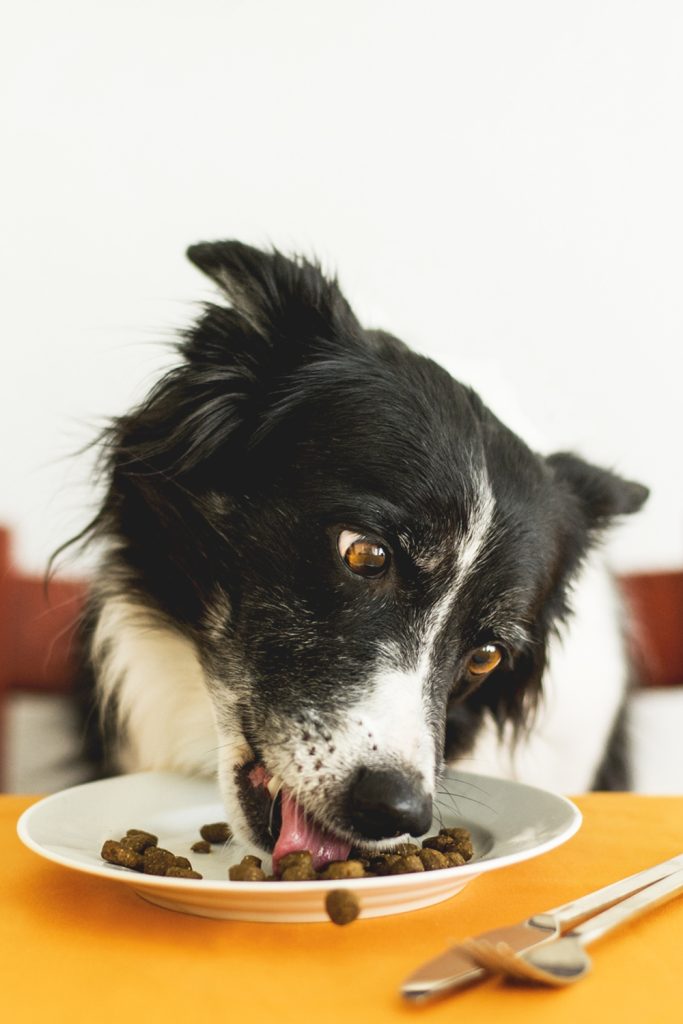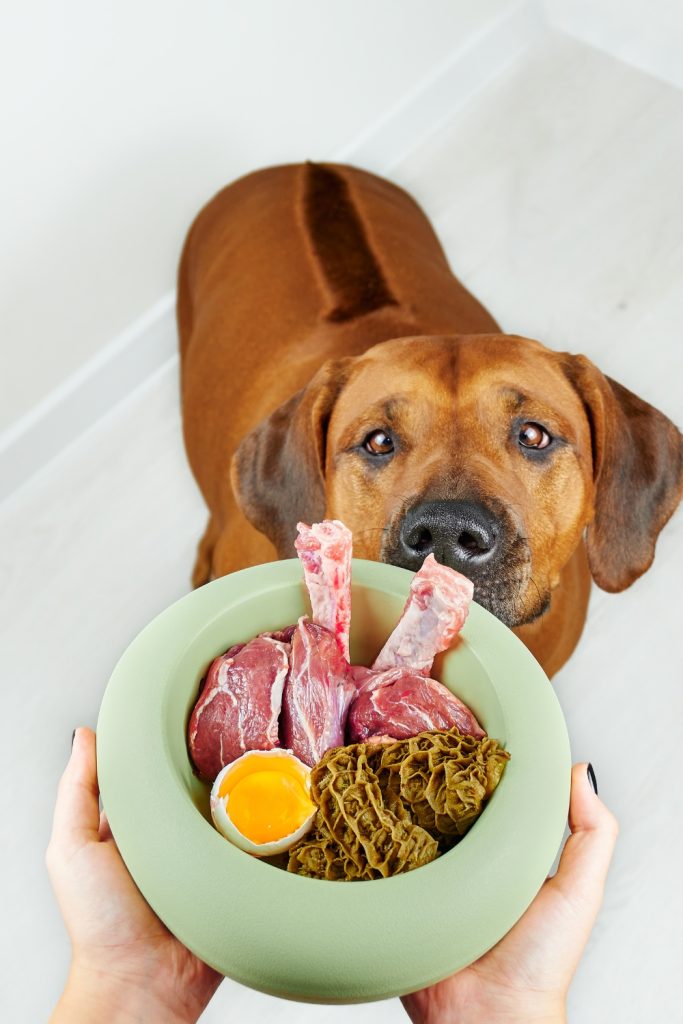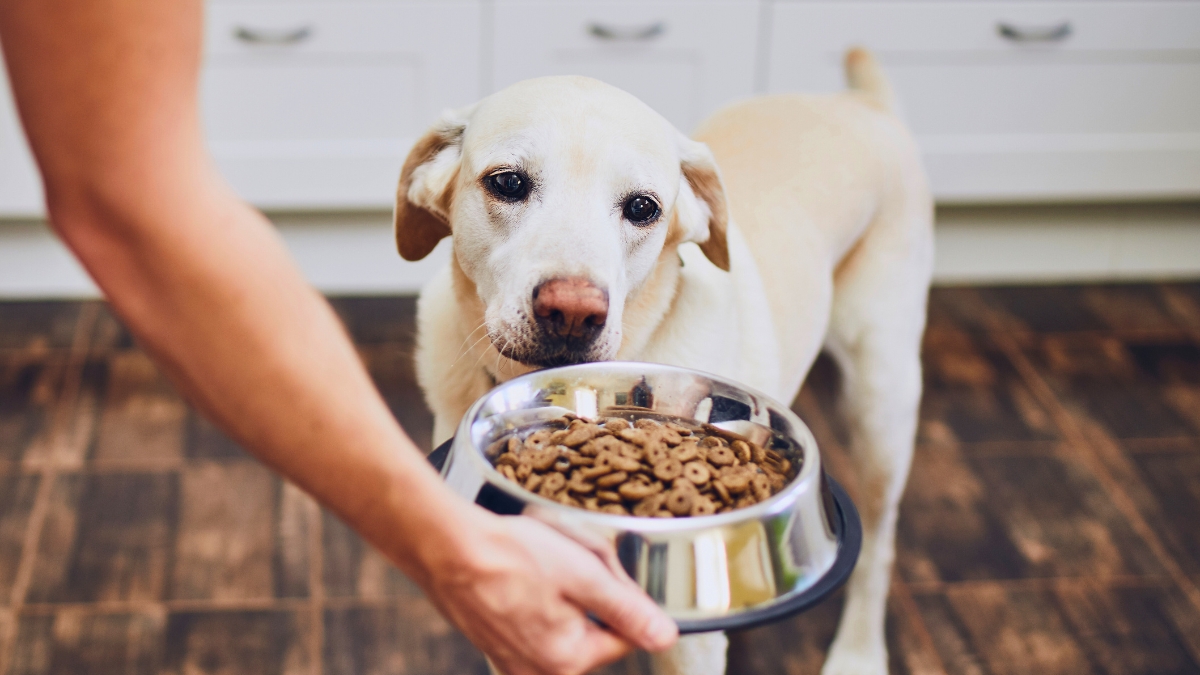Feeding your dog seems like a no-brainer, right? Just scoop, serve, and done.
But what if every time you fill up their food bowl, you’re making mistakes that could affect their health?
From meal timing to portion sizes, small errors can lead to digestive issues, weight gain, and even behavioral problems.
Here are seven common feeding mistakes and how to fix them.
1. Feeding Your Dog Only Once a Day
If you’re only feeding your dog once a day, you’re unintentionally overloading their digestive system. Their stomach has to handle a massive meal all at once, which can lead to slower digestion and discomfort.
But that’s not all. Once their stomach empties, it stays completely empty for the rest of the day, leading to acid buildup and unnecessary stress.
A better approach? Split their meals into two portions—one in the morning and one in the evening. Smaller, spaced-out meals help maintain stable energy levels and promote better digestion.
2. Always Using a Food Bowl
Feeding your dog from the same bowl every day might seem convenient, but it’s actually a missed opportunity for mental stimulation.
Before they became our couch-loving companions, dogs had to hunt, scavenge, and track down food. Nowadays, their meals magically appear in a bowl, removing the challenge and excitement of eating.
When your dog doesn’t have to work for their food, they can become bored, leading to destructive behaviors like chewing furniture, excessive barking, or anxiety.
The solution? Turn mealtime into playtime with fun feeding alternatives:
- Puzzle toys like the Kong Classic or Wobbler: dogs must work to get each piece of kibble.
- Snuffle mats: hide food in the folds and let them sniff it out.
- Licking mats: spread their food so they have to lick it, which is great for calming them.
If you don’t want to buy new gear, try DIY options:
- Towel rolls: sprinkle kibble on a towel, roll it up, and let them unroll it to find their food.
- Muffin tin game: place kibble in a muffin tin and cover the sections with tennis balls.
Mixing these activities with occasional bowl meals keeps your dog mentally engaged and happier.

3. Overfeeding Your Dog
It’s easy to think that giving your dog extra food is harmless, but overfeeding can lead to obesity—and that comes with serious health risks.
An overweight dog isn’t just slower—it’s at higher risk for joint problems, heart disease, and diabetes.
To prevent this, it’s important to measure their food intake properly. The feeding guidelines on the kibble bag are a good starting point, but there’s something else to keep in mind: treats count too!
If you give your dog multiple treats during the day, you should adjust their main meals accordingly. Even small bites add up, leading to extra calories they don’t need.
For example, if you’re giving several treats during the day, subtract that amount from their regular meals.
Every little bite adds up, and ignoring it could mean extra calories your pup doesn’t need.
A dog at their ideal weight lives longer, healthier, and happier—so it’s worth keeping their portions in check!
4. Feeding Before Walks
This is a major mistake, and the consequences can be serious.
When a dog eats, their body directs blood flow to the stomach to help with digestion. If they start walking or running right after eating, it disrupts this process and can lead to digestive issues.
The worst-case scenario? Gastric dilatation-volvulus (GDV), also known as bloat. This happens when a dog’s stomach fills with gas and twists, which can be life-threatening.
Bloat is often triggered by eating too quickly, consuming a large meal, or intense exercise right after eating. Symptoms include pain, bloating, and, in severe cases, the need for emergency surgery.
Large and deep-chested breeds are especially prone to this condition, but no dog is completely immune.
The solution is simple: feed your dog after walks, not before.
Ideally, wait about 30 minutes after a walk before feeding them, whether it’s morning or evening. If you must feed them before exercise, allow at least a 1-2 hour gap before any physical activity.
This small change can prevent dangerous health problems and improve digestion, keeping your dog comfortable and safe.
5. Not Paying Attention to Dog Food Ingredients
Choosing the right food for your dog isn’t just about brand names or price—you need to check the ingredients.
Not all dog foods are created equal. Some are filled with low-quality ingredients that provide little nutritional value and could even be harmful.
Here’s what to look for when selecting the best food for your pup:
- The first ingredient should be real meat. Look for specific proteins like “chicken” or “turkey,” and avoid vague terms like “meat by-products” or “meat meal”, which can include low-quality animal parts.
- Limit excessive starches and carbohydrates. Many kibbles use cheap fillers like corn and wheat. Opt for brown rice or sweet potatoes, which are more nutritious.
- A good dog food should contain fruits and vegetables. Ingredients like carrots, blueberries, or spinach provide essential vitamins and minerals.
- Avoid artificial preservatives. Harmful chemicals like BHT, BHA, and ethoxyquin can negatively impact your dog’s health. Instead, look for natural preservatives like vitamin E or rosemary oil.
It might seem overwhelming at first, but once you find a nutritionally balanced food, you won’t need to stress about it again—at least for a while!

6. Not Adjusting Dog Food Based on Their Age
Did you know your dog’s nutritional needs change as they grow?
Feeding the wrong type of food for their life stage can lead to nutritional imbalances and health issues.
For puppies, it’s essential to choose food designed for growth. Puppy formulas contain higher levels of protein, fat, and phosphorus to support their rapid development. Stick with puppy food until they reach 80% of their adult size, usually around one year old.
For senior dogs, switching to a senior formula is equally important. These foods are:
- Lower in calories to prevent weight gain.
- Easier to digest, reducing stomach discomfort.
- Enriched with joint-supporting ingredients, like glucosamine and omega-3s.
Adjusting your dog’s diet based on their age ensures they get the right balance of nutrients at every stage of life.
7. Not Considering Homemade Meals
Have you ever thought about making homemade meals for your dog?
Many people assume kibble is the only option, but that’s not entirely true. Before commercial pet food existed, dogs were fed natural, whole foods like meat, bones, and leftovers.
Today, more pet owners are turning to homemade diets to provide fresher, high-quality meals without preservatives.
Homemade meals can have tons of benefits—if done correctly. You have full control over the ingredients, ensuring that your dog’s food is free from unnecessary fillers and additives.
But let’s be clear: feeding homemade meals doesn’t mean tossing table scraps into their bowl. A balanced diet is essential. Your dog needs:
- Protein: Meat or fish as the main source.
- Carbohydrates: Small amounts of rice, quinoa, or sweet potatoes for energy.
- Healthy fats: Essential for skin and coat health.
- Fruits & veggies: Carrots, blueberries, spinach, and pumpkin provide vital nutrients.
The good news? Online tools and calculators can help you determine the right portions based on your dog’s size, age, and activity level.
Homemade meals don’t have to be expensive or complicated—you can mix them with high-quality kibble for the best of both worlds.
The goal is to provide a fresh, balanced, and nutritious diet that keeps your dog healthy and thriving.

Feeding your dog seems simple, but small mistakes can have long-term health consequences.
From meal frequency to portion control and hydration, every detail matters in keeping your pup healthy and happy.
By avoiding these seven common mistakes, you can improve your dog’s digestion, energy levels, and overall well-being.
A balanced, mindful approach to feeding ensures that your furry friend gets the best possible nutrition every day.
